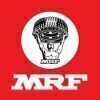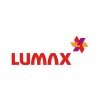Filter interviews by
Samvardhana Motherson Group Quality Engineer Interview Questions and Answers for Experienced
Samvardhana Motherson Group Quality Engineer Interview Experiences for Experienced
4 interviews found
I applied via Walk-in and was interviewed in Apr 2024. There was 1 interview round.
(2 Questions)
- Q1. Self introduction
- Q2. Interest in field
- Ans.
I have always been passionate about ensuring quality and efficiency in processes, which drew me to the field of Quality Engineering.
I have a strong attention to detail and enjoy problem-solving.
I am motivated by the opportunity to make a positive impact on product quality.
I have experience in implementing quality control measures in previous roles.
I am excited about the continuous learning and improvement opportunities
Interview Questionnaire
3 Questions
- Q1. Your interest
- Q2. About your interested skills
- Q3. Only about cv
Interview Preparation Tips
I applied via Naukri.com and was interviewed in Nov 2020. There were 4 interview rounds.
Interview Questionnaire
2 Questions
- Q1. Tell me something about you
- Q2. Which company do u past work
Interview Preparation Tips
I applied via Walk-in and was interviewed in Apr 2020. There were 3 interview rounds.
Interview Questionnaire
3 Questions
- Q1. 7 QC tools?
- Ans.
The 7 QC tools are a set of basic quality control tools used to identify and solve quality problems.
Check sheets
Control charts
Histograms
Pareto charts
Scatter diagrams
Stratification
Cause-and-effect diagrams
- Q2. Roles & Responsibilities on previous company?
- Ans.
As a Quality Engineer in my previous company, I was responsible for ensuring product quality, conducting audits, and implementing quality control processes.
Conducted product quality inspections and audits
Implemented quality control processes to improve product quality
Analyzed data to identify areas for improvement
Collaborated with cross-functional teams to address quality issues
Ensured compliance with industry standard
- Q3. QA & QC Difference?
- Ans.
QA focuses on preventing defects while QC focuses on identifying and fixing defects.
QA is a proactive process that involves planning, designing, and executing tests to prevent defects from occurring.
QC is a reactive process that involves identifying defects through testing and then fixing them.
QA is focused on the entire software development life cycle while QC is focused on the testing phase.
Examples of QA activities ...
Interview Preparation Tips
Samvardhana Motherson Group interview questions for designations
Top trending discussions






Interview questions from similar companies

Interview Questionnaire
4 Questions
- Q1. Personal and functional
- Q2. About your job description and processes and your achievements
- Q3. Your plus and minus
- Q4. Senior Management Intraction on the basis of personal, behavioral, backgrounds,job function and achievements.

I applied via Recruitment Consultant and was interviewed before Jan 2021. There was 1 interview round.
Interview Questionnaire
3 Questions
- Q1. How many level in ppap
- Ans.
There are 5 levels in PPAP (Production Part Approval Process).
PPAP has 5 levels: Level 1, Level 2, Level 3, Level 4, and Level 5.
Each level represents a different stage of the PPAP process.
Level 1 includes documentation submission, while Level 5 involves customer approval.
The higher the level, the more comprehensive the PPAP requirements become.
PPAP is used to ensure that suppliers meet the quality standards of their c
- Q2. Difference between cp and cpk
- Ans.
Cp measures the capability of a process to meet specifications, while Cpk measures the capability of a process to meet specifications considering centering.
Cp is a short-term capability index, while Cpk is a long-term capability index.
Cp considers only the spread of the process, while Cpk considers both the spread and the centering of the process.
Cp is calculated using the formula Cp = (USL - LSL) / (6 * standard devia...
- Q3. What is capa
- Ans.
CAPA stands for Corrective and Preventive Action. It is a systematic approach to identify, investigate, and resolve quality issues.
CAPA is a key component of quality management systems.
It involves identifying the root cause of a problem, implementing corrective actions to address the immediate issue, and preventive actions to prevent recurrence.
CAPA processes typically include steps like problem identification, investi...
Interview Preparation Tips

I applied via Campus Placement and was interviewed before Oct 2020. There was 1 interview round.
Interview Questionnaire
1 Question
- Q1. 2year experience complete
Interview Preparation Tips

I applied via Naukri.com and was interviewed in Dec 2020. There were 3 interview rounds.
Interview Questionnaire
1 Question
- Q1. Core Java, J2EE
Interview Preparation Tips

I applied via Recruitment Consultant and was interviewed in Nov 2019. There were 3 interview rounds.
Interview Questionnaire
4 Questions
- Q1. Qms related all questions (ISO/IATF). And how development of products in process, Processe controls
- Q2. How can improve communication and personality
- Ans.
Improving communication and personality requires self-awareness, active listening, and continuous learning.
Practice active listening to understand others' perspectives
Be aware of your own communication style and adjust as needed
Seek feedback and be open to constructive criticism
Read books or take courses on communication and interpersonal skills
Practice empathy and emotional intelligence
Be respectful and courteous in a
- Q3. How can show your potential
- Q4. How can show first impressions
- Ans.
First impressions can be shown through body language, attire, and communication skills.
Body language can convey confidence or nervousness
Attire can show professionalism or lack thereof
Communication skills can demonstrate intelligence and articulation
Eye contact and a firm handshake can also make a positive impression

I appeared for an interview in Jan 2025.
(3 Questions)
- Q1. What is 5 core tool , 7 qc tool , 8 D , why why analysis
- Ans.
Core tools and techniques used in quality engineering include 5 core tools, 7 QC tools, 8D methodology, and the Why-Why analysis.
5 Core Tools: APQP, PPAP, FMEA, MSA, SPC
7 QC Tools: Check sheets, Pareto charts, Cause-and-effect diagrams, Histograms, Scatter diagrams, Control charts, Flowcharts
8D Methodology: Eight disciplines problem solving approach used to identify, correct, and prevent recurring problems
Why-Why Analy...
- Q2. What is the role of company in DWM
- Ans.
The role of a company in Design for Manufacturability (DWM) is to ensure that products are designed in a way that makes them easy and cost-effective to manufacture.
Ensuring that product designs are optimized for efficient manufacturing processes
Collaborating with design and manufacturing teams to identify and address potential manufacturing challenges early in the design phase
Implementing design guidelines and best pra...
- Q3. What is MSA and SPC explain
- Ans.
MSA stands for Measurement System Analysis and SPC stands for Statistical Process Control.
MSA is a method used to assess the measurement system variation to ensure data accuracy.
SPC is a method used to monitor and control a process through statistical analysis.
MSA includes Gage R&R studies to evaluate the measurement system's repeatability and reproducibility.
SPC involves using control charts to detect any variatio...
(2 Questions)
- Q1. What is process quality
- Ans.
Process quality refers to the level of consistency, accuracy, and effectiveness in the execution of a particular process.
Process quality is about ensuring that a specific process consistently meets the desired standards and requirements.
It involves identifying and eliminating defects, errors, and variations in the process to improve overall quality.
Process quality can be measured using metrics such as defect rates, cyc...
- Q2. 8D explain.
- Ans.
8D is a problem-solving methodology used in quality management to identify, correct, and prevent recurring problems.
8D stands for 8 disciplines, each representing a step in the problem-solving process
Steps include defining the problem, forming a team, identifying root causes, implementing corrective actions, and preventing recurrence
Example: A manufacturing company uses 8D to address a recurring defect in their product
Interview Preparation Tips
Samvardhana Motherson Group Interview FAQs
Tell us how to improve this page.
Samvardhana Motherson Group Interviews By Designations
- Samvardhana Motherson Group Quality Engineer Interview Questions
- Samvardhana Motherson Group Production Engineer Interview Questions
- Samvardhana Motherson Group Engineer Interview Questions
- Samvardhana Motherson Group Senior Engineer Interview Questions
- Samvardhana Motherson Group Graduate Engineer Trainee (Get) Interview Questions
- Samvardhana Motherson Group Assistant Manager Interview Questions
- Samvardhana Motherson Group Design Engineer Interview Questions
- Samvardhana Motherson Group Computer Operator Interview Questions
- Show more
Interview Questions for Popular Designations
- Quality Inspector Interview Questions
- Senior Quality Engineer Interview Questions
- Quality Controller Interview Questions
- Quality Assurance Interview Questions
- Quality Manager Interview Questions
- Quality Executive Interview Questions
- Quality Assurance Officer Interview Questions
- Quality Assurance Quality Control Engineer Interview Questions
- Show more
Samvardhana Motherson Group Quality Engineer Interview Process for Experienced
based on 1 interview
Interview experience
Quality Engineer Interview Questions from Similar Companies
Fast track your campus placements
Samvardhana Motherson Group Quality Engineer Reviews and Ratings
based on 92 reviews
Rating in categories
|
Assistant Engineer
852
salaries
| ₹1 L/yr - ₹5.4 L/yr |
|
Engineer
649
salaries
| ₹1.8 L/yr - ₹7 L/yr |
|
Assistant Manager
579
salaries
| ₹4 L/yr - ₹13.8 L/yr |
|
Production Engineer
483
salaries
| ₹1.1 L/yr - ₹6.3 L/yr |
|
Senior Engineer
477
salaries
| ₹3.1 L/yr - ₹9 L/yr |

Bosch

JBM Group

MRF Tyres

Ceat Tyres
- Home >
- Interviews >
- Samvardhana Motherson Group Interview Questions >
- Samvardhana Motherson Group Quality Engineer Interview Questions for Experienced

















